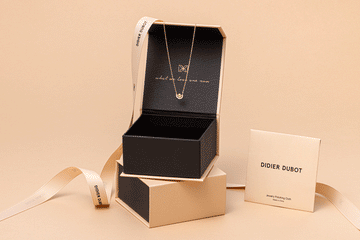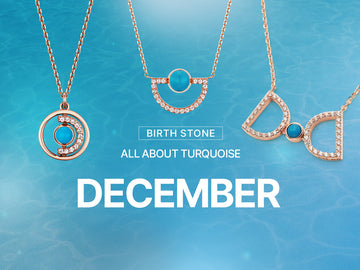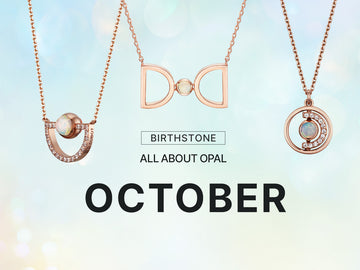Are Pearls Considered Gemstones?
Pearls are unique in the world of jewelry. They are considered gems, but they are not stones or crystals. Pearls share some similarities with their sparkling counterparts. They’re all naturally occurring elements with unique characteristics. The key difference lies within their formation.
Scientifically speaking, gemstones are linked to geology while pearls are a matter of biology.
Stones like rubies, diamonds, and emeralds come from deep within the earth’s crust. Pearls are organic products that have been created by living creatures. Crystals that come from the earth need to be mined, cut, and polished in order to be turned into jewelry. The natural form of pearls is already shiny, beautiful, and ready for jewelry design!
Where Do Pearls Come From?
Pearls are formed by small shelled sea creatures called molluscs. This particular species includes oysters, clams, and mussels. Molluscs can be found in bodies of water all over the world, which is why you’ll see freshwater and saltwater pearls. The appearance of pearls can vary depending on the habitat of the mollusc.

You might guess that pearls are easy to find since molluscs can live almost anywhere, but in actuality natural pearls are exceptionally rare. Many pearl-producing molluscs are currently endangered species. It’s estimated that only 1 in 10,000 wild oysters can produce a pearl, so most genuine pearls are made with human intervention.
How A Pearl Is Formed
Natural Pearls
Pearls are formed in nature as a method of protection for molluscs. They’re a fascinating byproduct of evolution. When an irritant like a fragment of seaweed or a scale gets lodged inside the shell of a mollusc, it protects itself by forming layers of nacre on top of the object. Nacre is the name of the material of the inner shell. It’s also responsible for producing the lustrous sheen that pearls are famous for. To create a pearl, a mollusc is essentially capturing the irritant and transforming it into another part of its shell.
Cultured Pearls
Most jewelry is made with cultured pearls since naturally occurring pearls are so hard to find. These are real pearls that have been formed with the help of humans. A nucleus that acts as an irritant is implanted into the shell of a mollusc, encouraging it to form a pearl.

Practicing pearl culturing has allowed the jewelry industry to thrive and also protects natural pearl habitats. Natural pearl diving is widely banned across the globe, and the amount of cultured pearls that are produced can be regulated.
Pearl Grading
Just as gemstones have the 4 C’s, pearls also have a grading system that determines their value.
Here are the factors to look out for when pearl shopping:
- Above-average sized pearls are a rare occurrence, therefore the larger the pearl is, the more valuable it will be. The average size of a freshwater pearl is around 6 or 7mm, so anything larger will be more valuable.
- Pearls are famous for their shiny appearance, so lustre is an extremely important factor. A small but lustrous pearl will be worth more than a pearl that is large but dull.
- Pearls can come in many different shapes as they are natural materials. Many people love the various organic shapes of pearls, but the most valuable shape is a sphere or circle.
- Shades of cream and white may be the most well-known pearl colors, but natural pearls can form in almost any color! The region of origin has the biggest impact on a pearl’s color. Akoya and freshwater pearls tend to come in lighter hues; South Sea pearls appear in pretty pastels; and Tahitian pearls are known for their rich, dark shades.
- Not to be confused with the luster or color, the surface refers to the finish and texture. Pearls are bound to have a few bumps and ‘blemishes’ as organic objects. The smoother the surface appears, the more valuable the pearl will be.
- All cultured pearls will have varying levels of nacre. The thicker the nacre is, the better the pearl will look.

Pearl jewelry is timeless, feminine, and chic. Embrace the elegance of pearls with our new line, La D.D collection.
Each piece is lovingly crafted with genuine high quality pearls and precious metals.
Writer: Maria Polansky

















